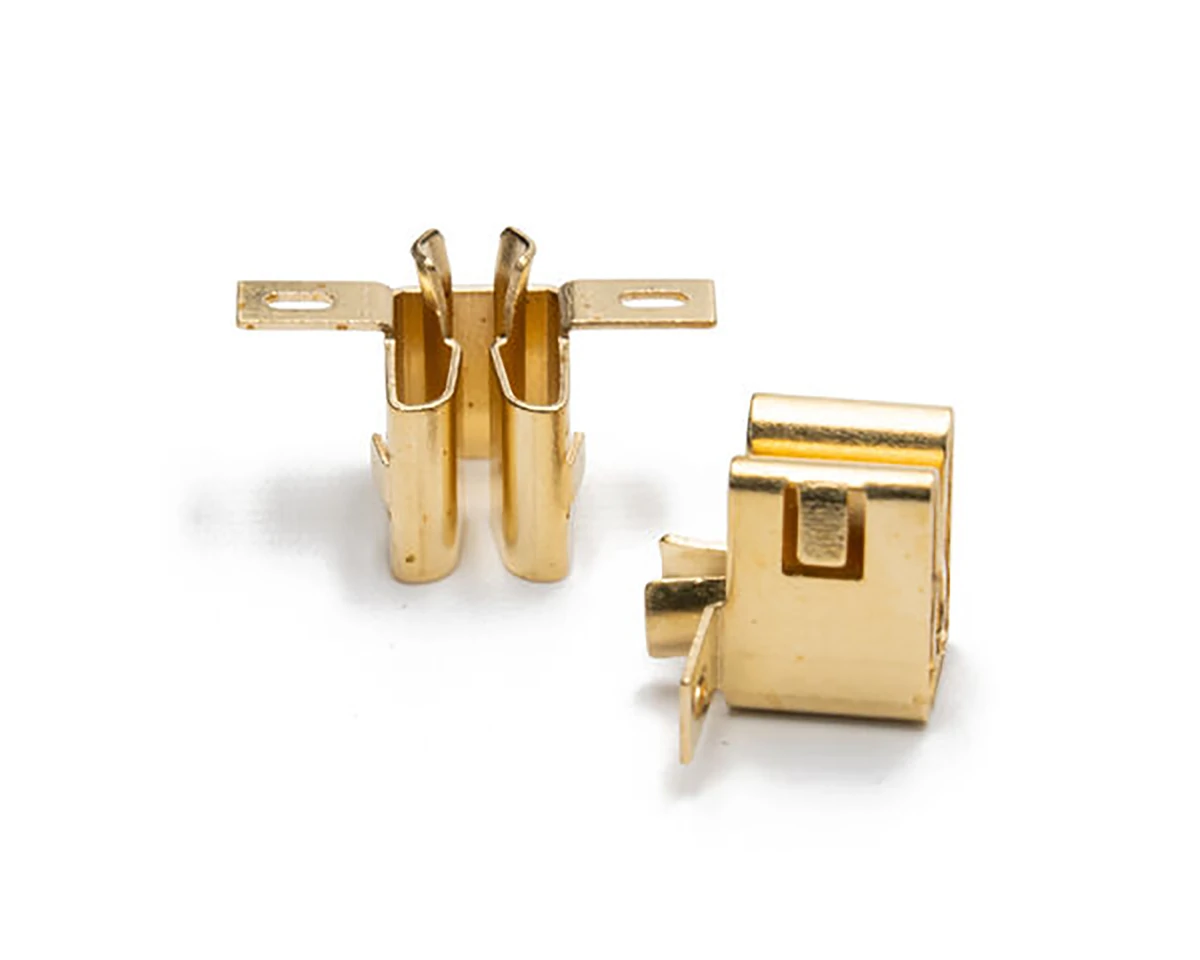Table Of Contents:
- What Is the Average Density of Brass and How Does It Affect Product Performance?
- What Is Brass Density?
- Why Density Of Brass Is It Important?
- How Is Brass Density Measured?
- Typical Density of Common Brass Alloys
- Which Factors Influence the Density of Brass?
- Does Brass Density Impact Material Properties?
- Brass Density Compare to Other Metals Used in Engineering
- How Is Brass Density Tested in Quality Control?
- What Tools and Charts Are Available for Brass Density Calculation?
- Conclusion
What Is the Average Density of Brass and How Does It Affect Product Performance?
When considering the average density of brass, it's important to note that this alloy, primarily comprised of copper and zinc, typically has a density ranging from about 8.4 to 8.73 grams per cubic centimeter (g/cm³). This variance largely depends on the specific composition of the brass, as different grades may contain varying proportions of these two primary metals alongside trace elements. Understanding the average density of brass is crucial, especially when designing products such as fittings, valves, and musical instruments. The density affects various physical characteristics, including weight, strength, and durability, all of which play significant roles in product performance.
The density of brass directly influences its mechanical properties. A denser material generally offers higher strength and better resistance to wear and corrosion, which is particularly beneficial in applications that require durability under stress, such as plumbing fixtures and hardware. Conversely, while a lesser density might suggest a lighter component, it could also indicate reduced strength or longevity. Hence, when choosing brass for a specific application, it’s essential to balance weight and performance requirements to ensure the final product meets intended quality and longevity standards. Whether you’re a manufacturer or a designer, considering the average density of brass not only informs your material choice but also impacts the overall functionality and reliability of your products.
What Is Brass Density?
Brass, an alloy primarily composed of copper and zinc, exhibits a specific density that influences its behavior in engineering and manufacturing. In general, As stated before the density of brass ranges from about 8.4 to 8.73 grams per cubic centimeter, depending on the precise composition of the alloy. This is significant because it affects the weight, strength, and malleability of the final product. Understanding brass density helps you choose the right type for your project, especially in settings where weight and strength are crucial considerations, such as in aerospace or automotive industries.
Moreover, the density of brass can vary slightly with different formulations and processing techniques. This is because the proportions of copper and zinc, along with the presence of other elements like lead or tin, can alter the density. When selecting brass for your application, it's important to consider how these variations can impact performance. For instance, a denser type of brass may be better suited for high-stress applications, while lighter options might be favored in non-weight-critical parts. Ultimately, grasping the concept of brass density not only aids in material selection but also enhances your understanding of how this versatile alloy can be effectively utilized in various industries.
Why Density Of Brass Is It Important?
Understanding the density of brass is essential, particularly when utilizing this adaptable metal across a range of applications. The density significantly influences how brass performs under various conditions. For instance, a higher density indicates a heavier material, which can impact the efficacy of components in machinery and structural applications.
As you progress through your projects, it is important to recognize how the density of brass affects its strength, durability, and wear resistance. This knowledge will assist you in selecting the most suitable material for your specific requirements. Additionally, brass density plays a critical role in its thermal and electrical conductivity, making it a vital property for electrical and plumbing applications.
When considering brass for components that will endure heat or transmit electrical currents, a thorough understanding of its density will enable you to assess both its efficiency and longevity. Furthermore, if you are involved in material testing or recycling, awareness of brass density can facilitate the identification of its quality and grade. By carefully considering the density of brass, you not only optimize the design and functionality of your project but also ensure that you leverage the material’s full potential.
How Is Brass Density Measured?
To determine, you first need to understand that it is defined as mass per unit volume, usually expressed in grams per cubic centimeter (g/cm³). The procedure begins by accurately weighing a sample of brass with a precise balance to obtain its mass. This step is essential as any inaccuracies in mass can lead to significant errors in the final density calculation.
Next, you’ll need to find the volume of the brass sample. This can be done through water displacement, where you submerge the brass in a graduated cylinder filled with water and measure the change in water level. The volume of water displaced by the brass will equate to the volume of the brass itself. If you're dealing with larger pieces or more complex shapes, using geometric calculations based on dimensions can also work. With both mass and volume measured, you can readily calculate the density using the formula: density = mass/volume. By following these steps, you ensure a reliable measurement of brass density, which can help guide various applications from crafting musical instruments to creating durable machinery components.
Typical Density of Common Brass Alloys
When exploring the typical density of common brass alloys, it’s essential to recognize that brass, an alloy primarily composed of copper and zinc, presents variations in density based on its specific formulation.
As you delve deeper into the world of brass, you may encounter different grades and types, such as Free-Cutting Brass, which typically has a density around 8.4 g/cm³. This particular type is designed for easy machining, making it popular in the production of fasteners and precision components. On the other hand, architectural brass, often used for aesthetic applications like fixtures and fittings, may have a slightly lower density, influenced by additional elements for color and finish. Knowing the typical densities of these various brass alloys can help you select the right material for your project, ensuring that it meets both functional and aesthetic requirements. Here is the density chart for some popular brass alloys.
| Brass Alloy | Density in g/cm³ |
|---|
| Red brass | 8.75 |
| Yellow brass | 8.47 |
| Naval brass | 8.44 |
| Brass C3604 | 8.5 |
| 260 brass | 8.53 |
| Cartridge brass | 8.53 |
| Muntz metal | 8.45 |
| Admiralty brass | 8.53 |
| Lead-free brass | 8.4 |
Have Any Questions In Mind?
Talk to our experts. Our qualified engineers are always happy to answer your questions.
Which Factors Influence the Density of Brass?
Brass, an alloy primarily composed of copper and zinc, has a density that can vary based on the proportions of these metals.
1. Composition
For instance, increasing the zinc content typically results in a lighter alloy, as zinc has a lower density than copper. Conversely, a higher copper content will yield a denser brass. This composition variability allows manufacturers to tailor brass for specific applications, from musical instruments to plumbing fixtures, by adjusting the ratio of its components to achieve the desired density.
2. Impurities
The presence of various impurities during the brass manufacturing process can significantly influence the density of the final product. Foreign substances such as oxygen, sulfur, and silicon can compromise both the density and uniformity of the alloy. These impurities may lead to the formation of porosities, cracks, or inclusions within the material, resulting in inconsistencies in porosity. To ensure a consistent density and the desired quality of the alloy, it is essential to minimize the presence of impurities. Furthermore, in high-quality brass, a reduced level of impurities correlates with greater uniformity in density throughout the metal.
3. Temperature
Another crucial factor influencing the density of brass is its temperature and the methods used during its production. As with most materials, temperature changes can affect the density of brass. When heated, materials generally expand, which can lead to a decrease in it if the volume increases without a corresponding increase in mass.
4. Microstructure
The density of brass can be effectively regulated by altering its microstructures, which encompass grain size and the phases present within the material. During the brass manufacturing process, the microstructure develops during solidification, significantly influencing the material's density. Typically, samples exhibiting finer grain structures demonstrate a higher density, as they contain fewer voids and internal spaces. Conversely, the presence of larger grains can lead to the formation of defects that negatively impact overall density. To achieve the desired microstructure, it is crucial to carefully control both the cooling rate and the alloy composition throughout the production process. Furthermore, enhancing the grain structure is directly correlated with an improvement in density.
5. Manufacturing Process
Additionally, the manufacturing process, whether casting, forging, or rolling, can introduce variations in density due to differences in the material’s microstructure. For example, cold working may increase density by causing tighter packing of the alloy’s crystalline structures. manufacturing process
Understanding these factors is vital if you're looking to utilize brass in any capacity, as they directly impact the material's characteristics and performance in practical applications.
Does Brass Density Impact Material Properties?
When considering the properties of brass, one commonly overlooked factor is its density. As you explore different brass alloys, it's essential to understand that density plays a crucial role in influencing various material properties. Brass, an alloy primarily composed of copper and zinc, can possess varying densities depending on the ratio of these metals, as well as any additional alloying elements. Generally, a higher density correlates with enhanced strength and durability, making it particularly beneficial in applications subjected to stress and wear.
Additionally, the density of brass can directly impact its thermal and electrical conductivity. Typically, denser alloys exhibit better conductivity, making them suitable for electrical applications where efficient current flow is necessary. Conversely, a lower density might result in alloys that are better suited for lightweight applications, such as in the automotive or aerospace industries. Therefore, when choosing the right brass for your project, it's important to consider how it influences not just its strength, but also its thermal and electrical properties. By doing so, you can make more informed decisions that align with the specific goals and objectives.
How Does Brass Density Affect Product Performance in Engineering Applications?
When considering the performance of products in engineering applications, brass density plays a pivotal role in determining how effectively a component will function under various conditions. As we mentioned above, brass is an alloy composed primarily of copper and zinc, and its density can vary based on the specific proportions of these metals. A higher density generally indicates greater strength, durability, and resistance to wear and tear. In engineering applications, especially those involving heavy loads or demanding environmental conditions, selecting a brass alloy with the appropriate density can significantly enhance the lifespan and reliability of the product.
Moreover, the density of brass affects its machinability and thermal conductivity, which are critical factors for components that require precise engineering and efficient heat dissipation. For instance, a denser brass might provide improved thermal conductivity, making it an optimal choice for applications such as heat exchangers or electrical connectors that need to effectively manage heat. Conversely, if your application requires lightweight materials with good machinability, you might opt for a lower-density brass option. Understanding how brass density impacts these performance characteristics allows you to make informed decisions, ensuring that your engineering designs not only meet the required specifications but also deliver optimal functionality over time.
Brass Density Compare to Other Metals Used in Engineering
Now, let’s place brass side by side with some other common metals. For instance, copper, one of brass’s primary components, has a density of around 8.96 g/cm³, making it denser than brass. Aluminum, often lauded for its lightweight properties, has a significantly lower density of about 2.7 g/cm³, which is why it’s frequently used in aerospace and automotive industries. On the other hand, steel, a widely used alloy of iron, can have a density ranging from 7.75 to 8.05 g/cm³, depending on its specific formulation. This comparison underscores that while brass is denser than lighter metals like aluminum, it strikes a balance that makes it versatile for applications requiring strength without excessive weight. Understanding these differences can help you choose the right material for your project based on weight, strength, and durability.
Let's proceed with a comparison of the density of brass alongside several of the most widely used metals.
| Metals | Density (g/cm³) |
|---|
| Brass density | 8.4 – 8.7 |
| Aluminum | 2.7 |
| Copper | 8.96 |
| Zinc | 7.14 |
| Bronze | 8.8-9.0 |
| Steel | 7.8-8.1 |
| Lithium | 0.534 |
| Beryllium | 1.85 |
| Sodium | 0.97 |
| Magnesium | 1.74 |
| Potassium | 0.86 |
| Calcium | 1.54 |
| Scandium | 2.99 |
| Titanium | 4.5 |
| Vanadium | 6.11 |
| Chromium | 7.19 |
| Manganese | 7.47 |
| Iron | 7.87 |
| Cobalt | 8.9 |
| Nickel | 8.9 |
| Molybdenum | 10.28 |
| Silver | 10.49 |
| Tin | 7.31 |
| Neodymium | 7.01 |
| Ytterbium | 6.9 |
| Tungsten | 19.25 |
| Gold | 19.32 |
| Mercury | 13.53 |
| Lead | 11.34 |
Have Any Questions In Mind?
Talk to our experts. Our qualified engineers are always happy to answer your questions.
How Is Brass Density Tested in Quality Control?
To test brass density effectively, quality control teams utilize a combination of precise measurement tools and established methodologies. Typically, the first step involves obtaining a sample of the brass material. This sample is weighed using a high-accuracy scale to obtain its mass. Simultaneously, the volume of the sample is determined, often through water displacement or geometric calculations, depending on the sample shape. These measurements allow the quality control team to calculate the density using the formula: density equals mass divided by volume.
Once the density is calculated, it is then compared to the known density standards for the specific brass alloy being tested. Variations in density can indicate issues such as impurities, inconsistencies in composition, or fabrication errors. If the density falls outside the acceptable range, further investigation is warranted. This might involve conducting additional tests or revising the manufacturing process to ensure that the quality of the brass meets industry standards. By regularly implementing density testing in quality control, manufacturers can maintain high-quality outputs and reduce the likelihood of defects, ultimately ensuring that their brass components perform reliably in their intended applications.
What Tools and Charts Are Available for Brass Density Calculation?
When it comes to calculating the density of brass, a valuable aspect in metalworking and engineering, various tools and charts can help you achieve precision. One of the most straightforward approaches involves using a basic density calculation formula: density equals mass divided by volume (Density = Mass/Volume). To apply this, you can utilize a digital scale to determine the mass of your brass sample. Once you have the mass, measuring the volume can be done using water displacement methods or geometrical calculations, depending on the shape of the brass object. This hands-on technique is often favored for its simplicity and accessibility.
For those seeking a more structured approach, density charts specific to brass alloys are readily available. These charts typically provide the density values of various brass compositions based on their elemental ratios. By referencing these charts, you can quickly determine the density of specific brass grades without performing elaborate calculations. Additionally, various online calculators and software tools can streamline this process. By entering the specific composition of your brass alloy, these digital tools will not only provide density values but may also offer the material properties and applications suited for that particular blend. Utilizing these resources ensures that your calculations are both accurate and efficient, allowing you to focus more on your project and less on the technicalities.
Conclusion
Comparing and understanding the causes and effects of density of brass involves factors like composition, impurities, temperature, microstructure, and manufacturing processes. This brass property that enable you to apply it in the industrial and mechanical related fields effectively.
A comprehensive analysis of the causes and effects of brass density entails examining several key factors, including its composition, the presence of impurities, temperature variations, microstructure, and the methods of manufacturing. Understanding these properties of brass is essential for effective application in industrial and mechanical fields.
Have Any Questions In Mind?
Talk to our experts. Our qualified engineers are always happy to answer your questions.















